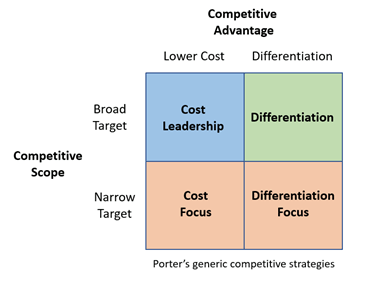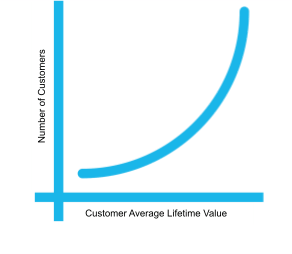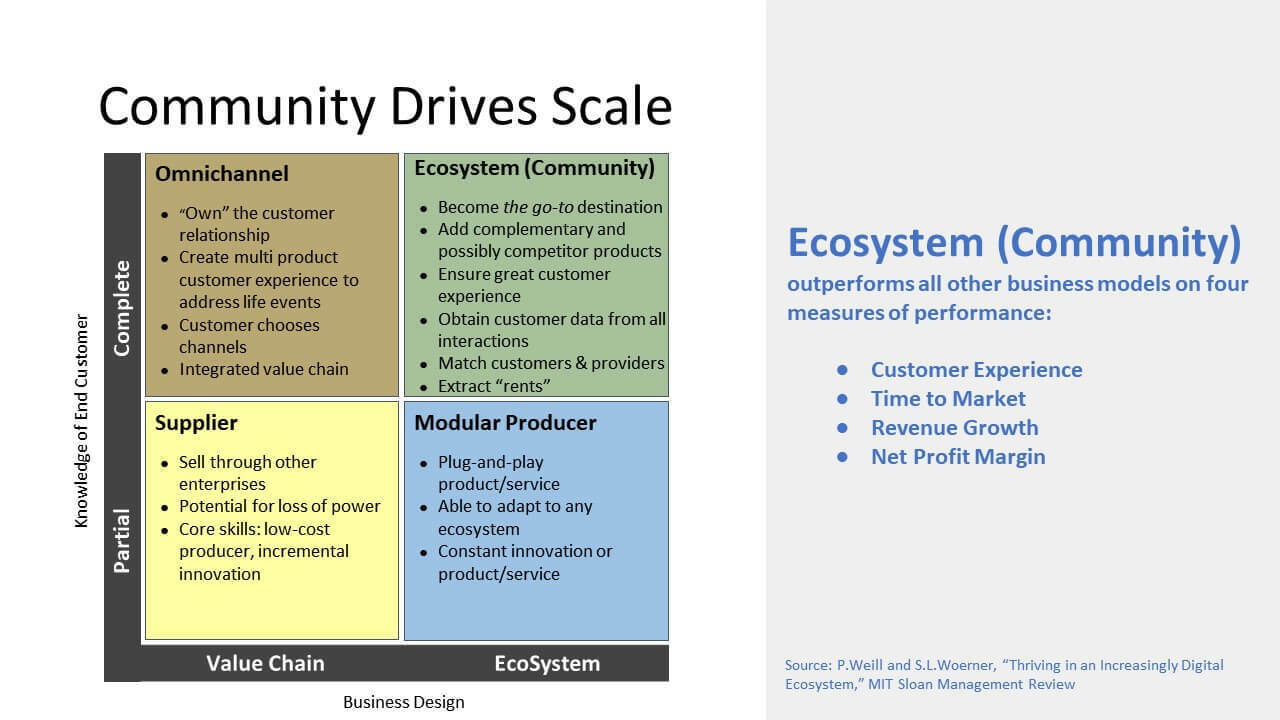Unlock Sustainable Growth. Leaders need a strategy built on a deep understanding of customer aspirations and insight into how to be both different and more valuable.
Strategies that incrementally grow business revenue limit stakeholder and enterprise value. Most Mid-life, Middle Market Company strategies do not unlock sustainable scale. These strategies do guide (or, more accurately, declare goals to achieve) incremental growth.
Most enterprise leaders rely on shop-worn strategy methodologies that deliver incremental revenue increases and “competitive advantages” that are easy to copy. To reach enterprise valuations beyond traditional approaches, leaders need a strategy built on a deep understanding of customer aspirations and insight into how to be both different and more valuable.
Traditional Competitive Strategy defines how a firm plans to vie for an advantage with respect to competitors. The process unfolds over six stages –
A cost leadership strategy keeps prices lower than competitors to encourage customers to purchase lower-priced products. Businesses use a cost leadership strategy in industries with high price elasticity, such as energy and transportation. This strategy is effective for companies producing a large volume of products for low costs. These businesses often have large-scale production methods, high-capacity utilization, and distribution channels with which to work.
It suits large businesses that can produce a large volume of products at a low cost, which is why Walmart implemented this strategy. It means that companies using a cost leadership strategy are the lowest-price sellers on the market. Being a low-cost seller is possible with the help of large-scale production, high-capacity utilization, and a broad set of distribution channels where the company provinces the lowest price.

Businesses may use the differentiation leadership strategy to distinguish their products from competitors by emphasizing specific features of their products. This strategy involves the design or function of a product. A company that’s been in operation for a while may use this strategy to show that an original offering is better than newer products. Alternatively, a newer company may use this strategy to show that a new invention is more beneficial than existing offerings. The goal is to appeal to more customers through unique features and quality while keeping competitors from obtaining a larger market share for products. Starbucks and Apple belong to brands using this strategy.
The cost-focus strategy is similar to the cost leadership strategy, but the cost-focus strategy involves catering to a specific market. This strategy still involves trying to offer the lowest price, but it attempts to target a unique market segment with specific preferences and needs. When a company implements a cost focus strategy, it can establish brand awareness more efficiently within a specific geographic market.
This strategy is similar to cost leadership, providing customers with the lowest price. It’s easier for companies to establish brand awareness. Companies often focus on geographic markets with special needs.
Companies using this strategy also focus on specific market segments, but their driving force is the unique value. Cost focus strategy means providing the lowest price in a small niche.
The differentiation focus strategy is similar to the differentiation leadership strategy in that both attempt to highlight unique product attributes and features. The difference between them is that while the differentiation leadership strategy may involve appealing to a broader market, the differentiation focus strategy involves appealing to a specific market segment. This strategy typically doesn’t prioritize the price of a company’s offerings, as it attempts to highlight how its offerings are unique compared to those of its competitors.
Differentiation focus strategy means improving the product with the help of unique features that will make your company stand out on the market.
This approach to strategy focuses on scaling a new category – where:

A firm’s SmartScale℠ strategy is not a hybrid of the above Traditional Competitive Strategies. The Traditional Competitive Strategies are an approach to posturing within existing industries – a fight for an incremental advantage. SmartScale℠ is about achieving and sustaining outsized Growth.
Creating a category – and then SmartScaling may sound illogical or metaphysical. Traditional business management teaches that enterprises should establish a competitive advantage within an industry, grow, consolidate, and achieve economies of scale. While there is a correlation between economies of scale and profitability, where larger companies profit from commercial influence and cost efficiencies, the correlation between scale (in this instance, scale – little s – means achieving significant growth) and profitability is weak. Profitability is a function of category leadership. (Why Category Leadership Matters More Than Ever in Medtech. https://www.bain.com/insights/…)
If a company that is SmartScaling can build a platform or other ecosystem around their category, the enterprise will achieve sustainable scale.

If you want greater detail about how to scale your midlife business, check out The Mid-Life Business Acceleration Story: A New Perspective on Disruptive Transformation and Exponential Growth
